Charting LaLiga #1: Yamal on the hunt, Almada spark, hapless Girona (& more)
Following the completion of MD1, we take a look at some things that stood out to us across the league -- some new and some not-so-new.
A new addition to our coverage this season, Charting LaLiga will be a fixture after every matchday.
The premise is simple. Every week, we’ll churn out some points of interest from around the league in a (hopefully) digestible, easy-to-read manner. And of course, there will be a data element behind much of it.
Charting LaLiga will be a space for all types of insights, no matter the breadth of the topic or which team or player is under the spotlight. Sometimes they’ll be on the big themes everyone is aware of; other times they’ll be minuscule details that wouldn’t warrant an article of their own (but have a small place here).
All posts will typically be made up of anywhere between 3-6 sections, and you can expect these to land on a Tuesday (following the usual Monday night fixture).
Any feedback, do let us know on here or X!
Yeremy Pino steps into Baena’s shoes
Alberto Moleiro may be Villarreal’s long term bet to ‘replace’ Álex Baena — at least in stylistic terms — but it was Yeremy Pino who picked up the immediate reins, beginning on Friday night.
Although he had got some practice runs in pre-season, the ‘Baena role’ represents a pretty marked shift for Pino. It takes him from being a largely touchline winger into central areas a lot more, given Sergi Cardona’s prominence in wide areas and the difference between left-right midfield roles in this side (left tucks in, right stretches the play wide).
Pino did alternate inside-out duties with Cardona throughout Friday night’s game, but we’ve probably never seen the Canarian quite so active from a central role in LaLiga. Indeed, in what was his 133rd top-flight game, Pino’s 75 touches and 48 completed passes were both his most in a single LaLiga match to date.
(That was conditioned in part by Oviedo going down to 10 men, although the pattern of play was pretty clear.)
Of course, playing in the ‘Baena role’ is a different thing to being Álex Baena. Pino inevitably lacks some craft with his touches and doesn’t have anything like the sort of vision that his predecessor does, but there were still plenty of things to like about his display and individual take on the position.
Perhaps the biggest plus point was his movement. Pino did a great job of bothering the opposition backline and playing with Oviedo markers, making the most of his natural winger mentality. In the example below, note how he attracts Kwasi Sibo towards the ball, before spinning out and attacking the space left behind.
Although Aaron Éscandell got out in time to sweep up the ball from Juan Foyth, Pino’s runs were an immediate source of pain for Oviedo.
Here was another just over 90 seconds into the game — again, throwing the visitors into a state of confusion as to how best to position themselves against a ball over the top (again, from Juan Foyth).
Where Sibo loses sight of Villarreal’s #21, right-sided centre back Oier Luengo hesitates on whether to follow the run of Eyong or shift across and tend to Pino’s dart between the gap. On both occasions, Villarreal were able to bypass midfield and immediately get the opponent’s backline under pressure.
There’s no doubt Pino will need some more exposure in the position to become an effective passer and mover of the ball himself — movements without it won’t always be the first port of call — but there’s no doubt he can be effective as he is. The 22-year-old is dynamic, has a good appreciation for the game around him, and always pours a huge amount of energy into his work (with and without the ball).
Although Alberto Moleiro did look bright when he came on in the second half, it wouldn’t be a surprise to see Marcelino bed him in slowly and leave Pino in position for some time yet. As alluded to in the previous paragraph, one big advantage that Pino does have for now, on top of his natural longevity in the team, is his defensive work. When it comes to guarding the left side of their 4-4-2 and getting pressure on opposition full backs, he’s a much more reliable player out-of-possession than Moleiro currently is
That’ll count for a lot in Marcelino’s view as far as ‘Baena role’ minutes go — at least until the ex-Las Palmas man can demonstrably change his mind.
JK
Let it fly, Lamine
Over an hour of Barcelona’s opener against Mallorca was a game of 10 outfielders versus eight. With that, we didn’t get to learn much about either side in terms of their 2025-26 outlook.
But we will talk about Lamine Yamal.
Nine shots (one goal), three chances created, and six completed take-ons tells you there was little mercy from the 18-year-old. Indeed, the only other player on record to replicate that in the opening game of a LaLiga season is Lionel Messi (v Real Betis in 2016-17). It was — even in odd circumstances — sheer attacking volume that very few players can match.
“He did it against a nine-man Mallorca side!” we hear you scream. And true, that’s a fact.
However, even if Mallorca did suffer two red cards, Yamal didn’t want for individual attention in the game. Little came easy. Unless it was a long switch of play to work a momentary one-v-one with Johan Mojica, Mallorca still kept plenty of attention on him. Even down to nine men, Jagoba Arrasate’s tight 4-4-0 kept at least two bodies on the left flank, looking to cover both the dart to the touchline and the cut back inside onto his strong foot.
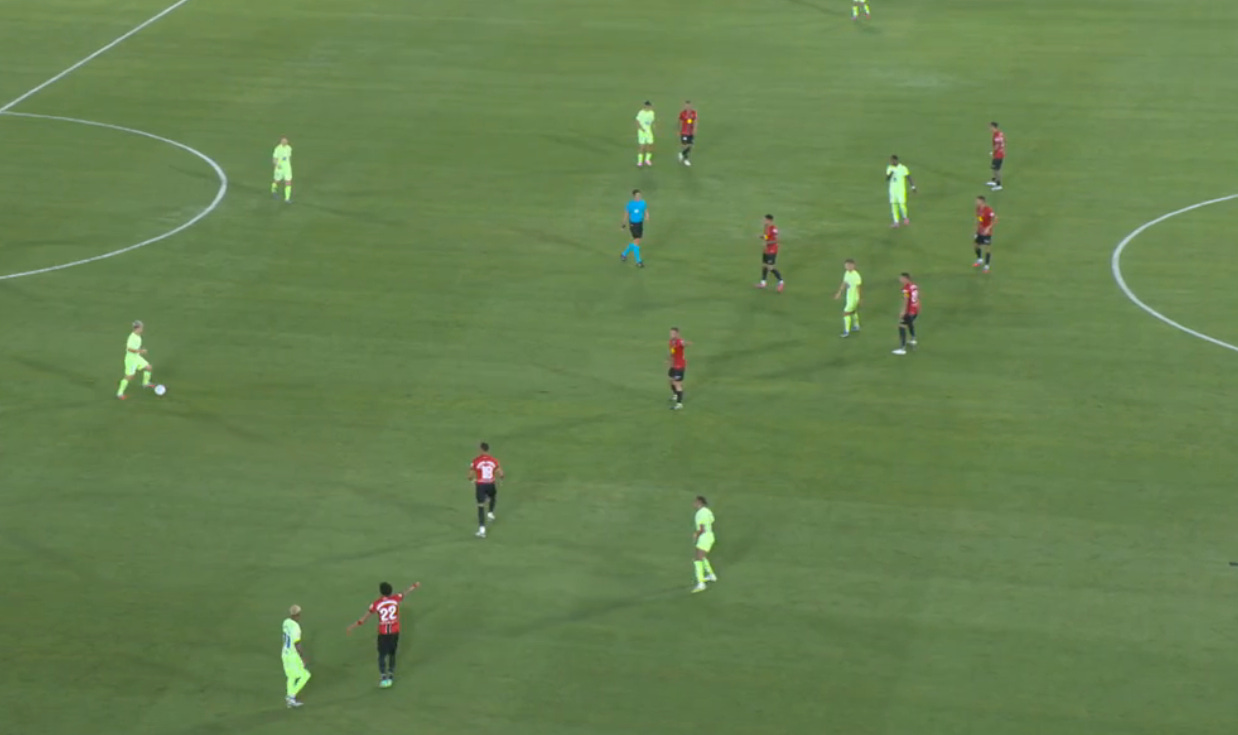
Yamal still, largely, got where he wanted to go. With sporadic runs taking Mojica to the touchline just to keep him guessing — including with his first touch of the season just over two minutes in — the Barça’s man’s eventual shot map turned out to be an instructive one.
Nine shots, all with his left foot, all affording him the same angle. Only once has he had more attempts in a LaLiga game and more attempts following a carry (he had five on Saturday), while his eight shots from outside the box were a game-high in league action.
From watching him at Son Moix and in pre-season, it seems pretty clear that Yamal is going to be hunting his own a lot more this term. Becoming a prolific goalscorer is the next step in his evolution, as well as the thing that can catapult him into a more unanimous position as one of — if not the — best player in the wold.
And the thing is, you get the sense that he knows it is entirely possible.
Why wouldn’t he? He’s already produced goals in big moments, he’s not afraid of responsibility, and his dribbling ability is a guarantee. That talent can repeatedly take him where he wants to go. He doesn’t have to rely on others to engage him in the match or constantly find his runs. With the way Barcelona set up — usually isolating Yamal on the right — the dribble, drop of the shoulder, and angled shot on his left is going to be accessible to him almost every game.
The trick is a more experienced, smarter version of Yamal will know how to get there more often. Take the full back to the touchline twice in a row, throw in some fakes, keep them guessing… but with a renewed intention that, when the opportunity arrives to get onto his left foot, Yamal is going to be hunting goals in a different way.
Throw in the fact of a possible Robert Lewandowski decline, a potentially unrepeatable season from Raphinha on the production front, and the fact that Yamal — now 18 — has a full season behind him in which he was one of the biggest attacking threat in the world, and the desire for more decisive performance in front of goal is easily understood.
Nine goals in LaLiga last season is not the plan this time round.
JK
Getafe put the clamps on Celta Vigo
Uh oh, José Bordalás is back.
Once again dealing with a less-than-ideal squad situation, he was able to extract another masterplan of resistance and get a big win on the road. And against an opponent in Celta Vigo who we know are skilled, well coached, and able to create chances better than most.
Celta ranked seventh for both total xG and from open play in home matches last season; essentially the ‘best of the rest’ behind the top six sides we know of. Here, however, they slumped to just 0.73 xG and created just one ‘big chance’ according to Opta’s definition, despite having 69% of the ball.
For Getafe, it was a mixture of 5-3-2 and 5-4-1 shapes that set it all up. The back five allowed them to match up with Celta’s typical line of five, and the tight central midfield three made it very difficult for the home side to find their chief playmakers inside. Iago Aspas made just 43 touches in a high possession game; his lowest total in a 90-minute outing in the Giráldez era.
And just look at the emphasis Getafe put on him and that central trio:
The initial idea was to crowd them out. Crucially, though, there was much to be said about the preparedness of the defenders in anticipating balls over the top or down the sides. As we can see here, the visitors did a fine job of being close enough to get immediate man-to-man pressure on receivers, while being vigilant of Celta looking for runners (and bypassing the Getafe cluster).
Giráldez’s side rarely found their rhythm and struggled to displace Getafe’s centre backs, which thus meant opting into wide attacks more than they’d like. But without their usual speed of passing, the problem they then found was Getafe collapsing onto the side and presenting them with another big obstacle.
“We found it more difficult than usual to circulate [the ball] and generate superiorities,” the Celta boss would say after.
Maybe a Celta team in week five or six would have found quicker and smoother avenues through and around, but on week one, they rapidly became frustrated — not only by Getafe’s crowding of their favourite areas to play but by the permanent aggression too. Pass attempts into the middle were regularly met with snapping challenges and contact.
As the early weeks of the season progress, it’ll be interesting to see how other teams approach the challenge of facing Celta; especially with respect to the main central attackers and potentially following Getafe’s lead.
JK
Thiago Almada helped make Atlético make sense
It was all going so well for Atlético. They were bright, moving the ball well, controlling the flow of chances — and then they took Thiago Almada and Álex Baena off, and were no longer any of those things.
Within 20 minutes, they conceded twice to fall behind. One from a free kick where Giacomo Raspadori simply switched off at the back post (although a questionable call to have him marking Miguel Rubio in the first place) and then one from an unnecessary Pablo Barrios giveaway, not closing down a cross, and Pere Milla scoring a header he probably converts once out of 100 attempts.
Before throwing away the game in frustrating fashion, the emergence of Thiago Almada had really looked to be curing an achilles heel of Atlético’s in real time; that being how to move the ball effectively through the thirds and give life to their play without simply falling in to side-to-side action.
Almada was active — and most importantly, available. Given freedom to move from his left-side midfield position, the youngster picked up a lot of passes in deeper areas, showed security on the ball, and got Atlético moving with a real appreciation for building spells of play. Instead of waiting in a determined zone to get on the ball, the Argentinean took pressure off those behind him and went looking for it, helping to knock down that first barrier of possession.
Up until his substitution, only Robin Le Normand (64) had made more passes in the game than Almada (58), and only 11 of those 58 passes were back towards one of Atlético’s two centre backs.
Of course, the 24-year-old wasn’t the sole reason for Atlético’s fluent football — the trio of Almada, Baena and Álvarez were sharp and unpredictable to read, Hancko offered strong distribution from left centre back, and Ruggeri’s wing back role was effective, in what looked an especially strong left side. Almada was, however, the origin for many of their productive spells of play, even if other players made similarly strong contributions along the way closer to goal.
When later asked about the decision to bring the likes of Almada and Baena off, Simeone admitted it had been a “learning experience” for him. In other words, that probably won’t happen again.
JK
Míchel needs to get creative
It is hard to think of a worse 45 minutes than Bojan Miovski’s start to the season on Friday night, as Rayo Vallecano downed Girona 3-1 at Montilivi. Okay, we see you Paulo Gazzaniga, but we’re talking outfield players and something as an ongoing concern.
We tweeted this during the game on Friday night:
On rewatch, it got even worse. He only touched the ball four times in 45 minutes; the fewest of any player to play at least a half of football on MD1, while two of Miovski’s touches were kick-offs from Rayo’s opening two goals.
He wasn’t on the field by the time of the third kick-off, with Míchel sacrificing him after Gazzaniga’s sending off.
With a couple of weeks to prepare for a game and then to go out and have such little influence is concerning. Miovski has been linked with a move away, but if he is going to leave then why start him? If they have watched him and think he is magically going to become a focal point in attack, that’s even more concerning.
Since Miovski joined last summer, he has played 921 minutes and averaged 19.8 touches per 90; the lowest among all Girona players to have played at least 500 minutes in that time. He has also averaged just 0.4 shots on target per 90, compared to Cristhian Stuani’s 1.61 per 90.
He has scored just two goals in that time. Two.
Having said that, Girona have a goalscoring problem in general. Stuani is the only player to have scored more than five in the last 12 months, yet their signings to date don’t suggest they think they have a problem. They have signed defender Vitor Reis from Manchester City on loan and picked up Axel Witsel, another centre-back. Of the most offensive-minded options, right wing back Hugo Rincón and Thomas Lemar — who scored nine goals in seven seasons at Atlético Madrid — aren’t exactly going to drive a scoring sea change.
This Girona side is going to look a lot different by Christmas time. We had high hopes for their turnaround this term, but despite the fact that Rayo are one of the better out-of-possession sides in the league, this was still pretty poor for Míchel’s men.
RD
Anything else you liked or thought was worth mentioning on MD1? We, of course, can’t hit on everything and inevitably leave some bits on the table… let us know on here or X!






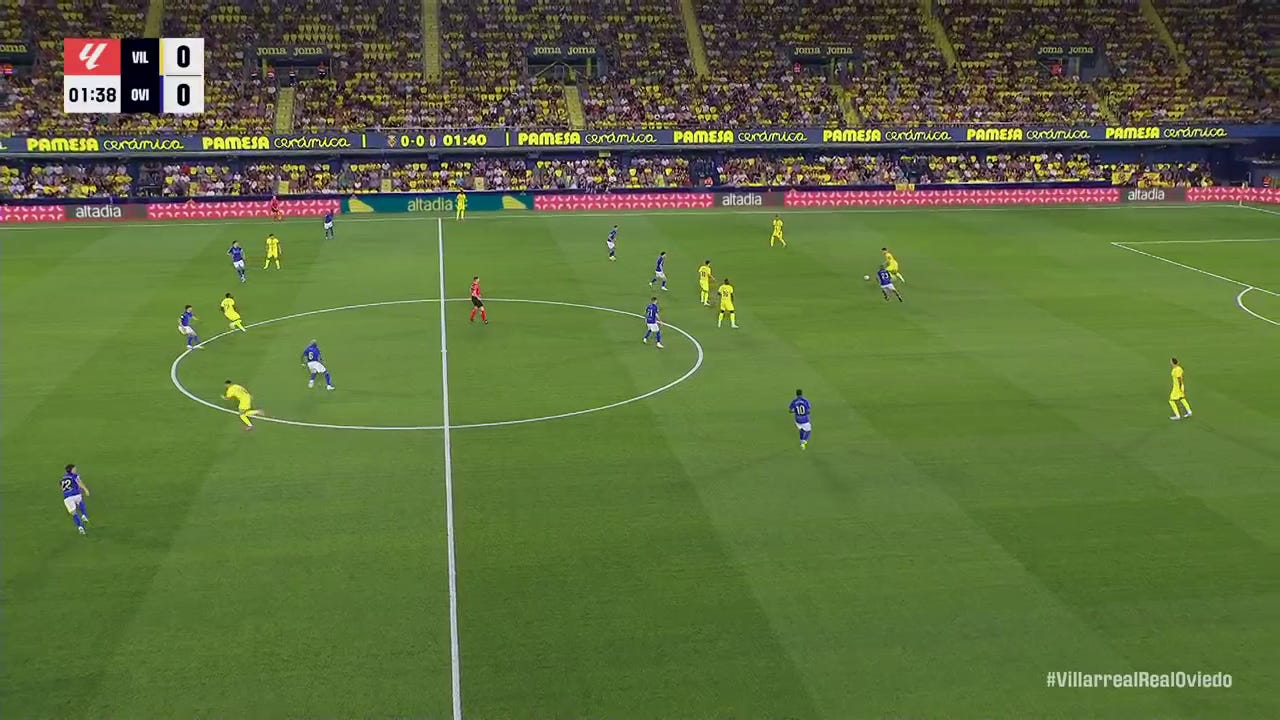
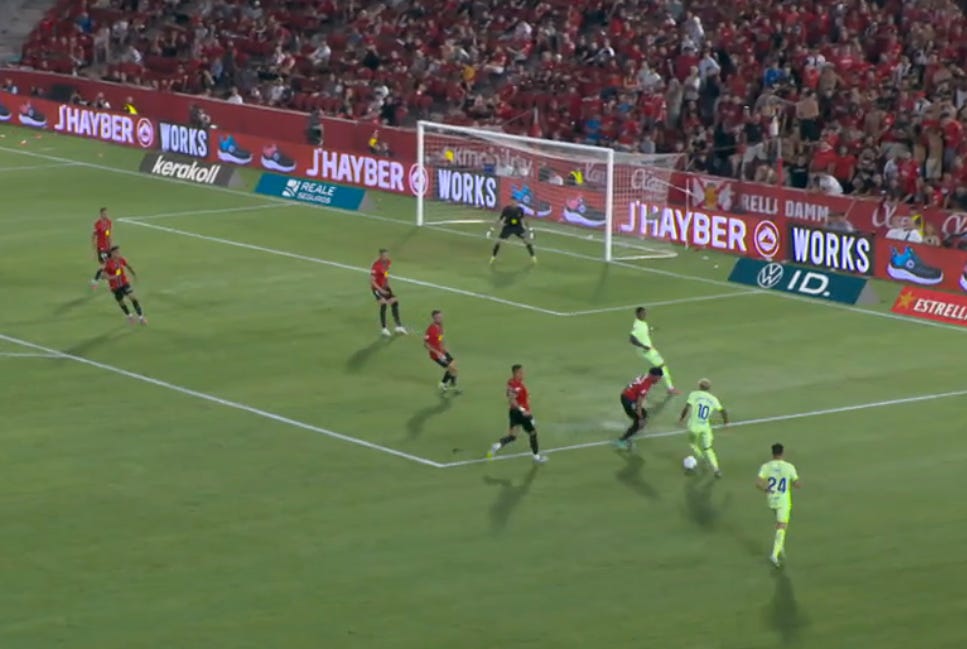
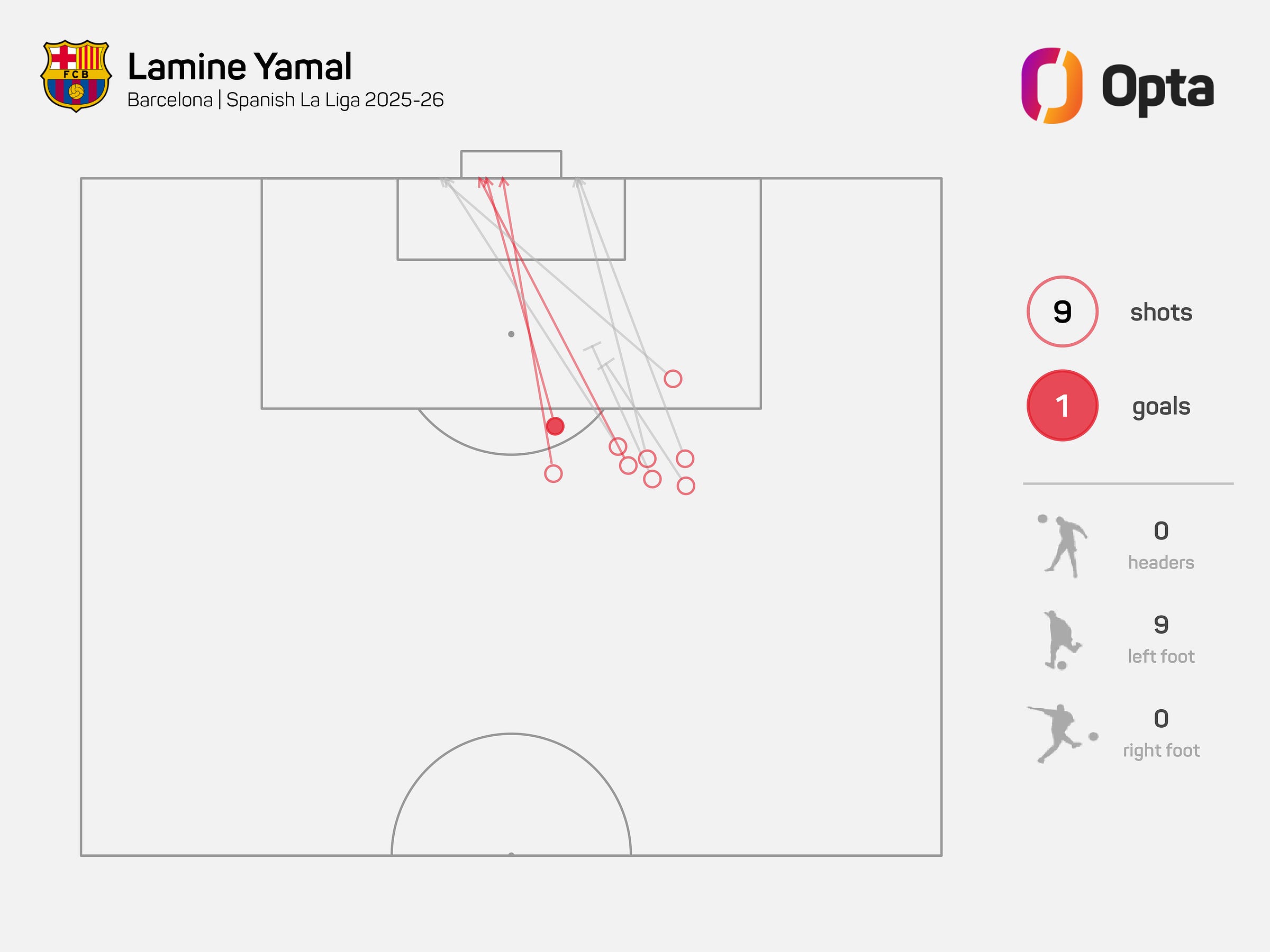
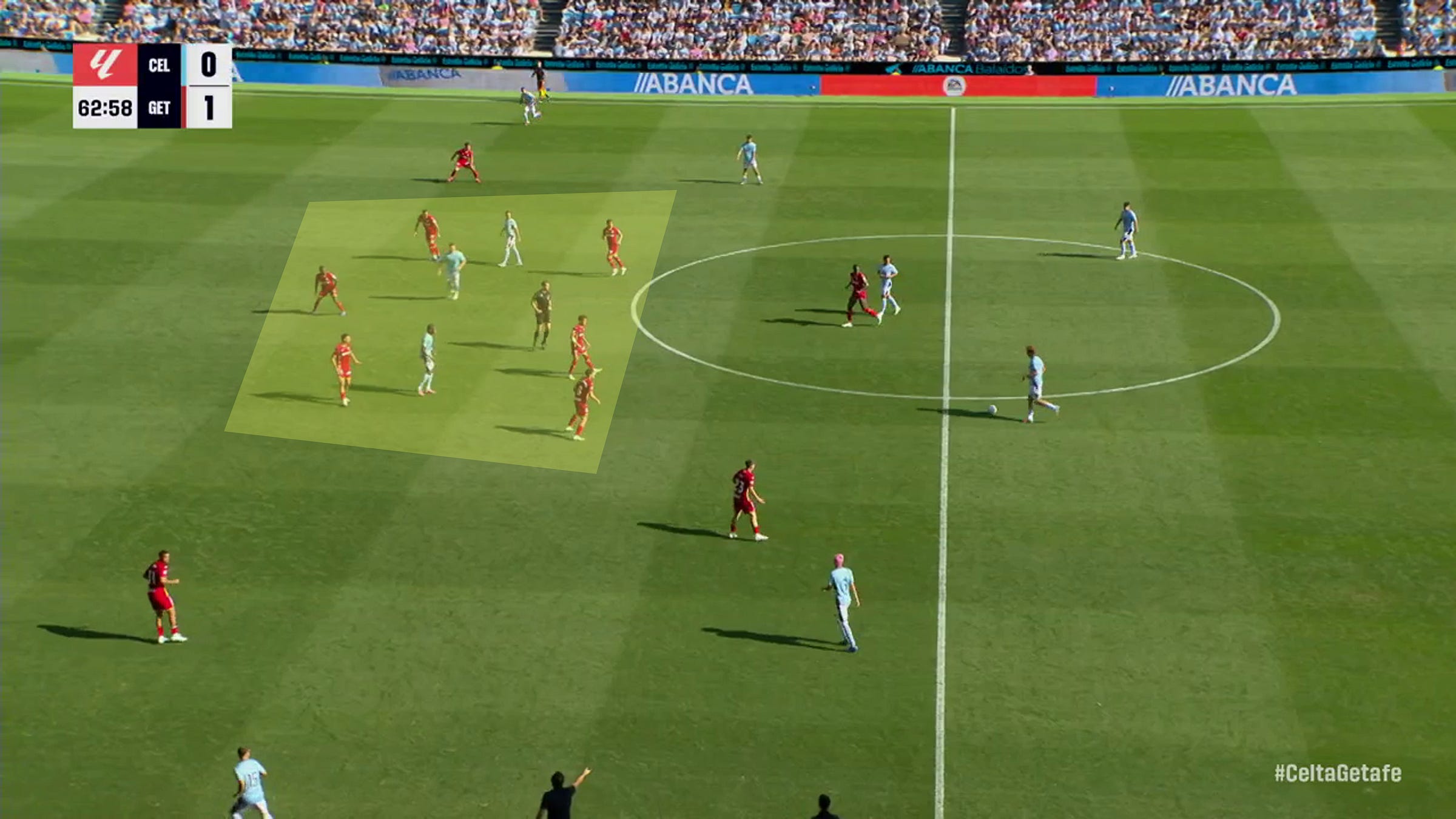
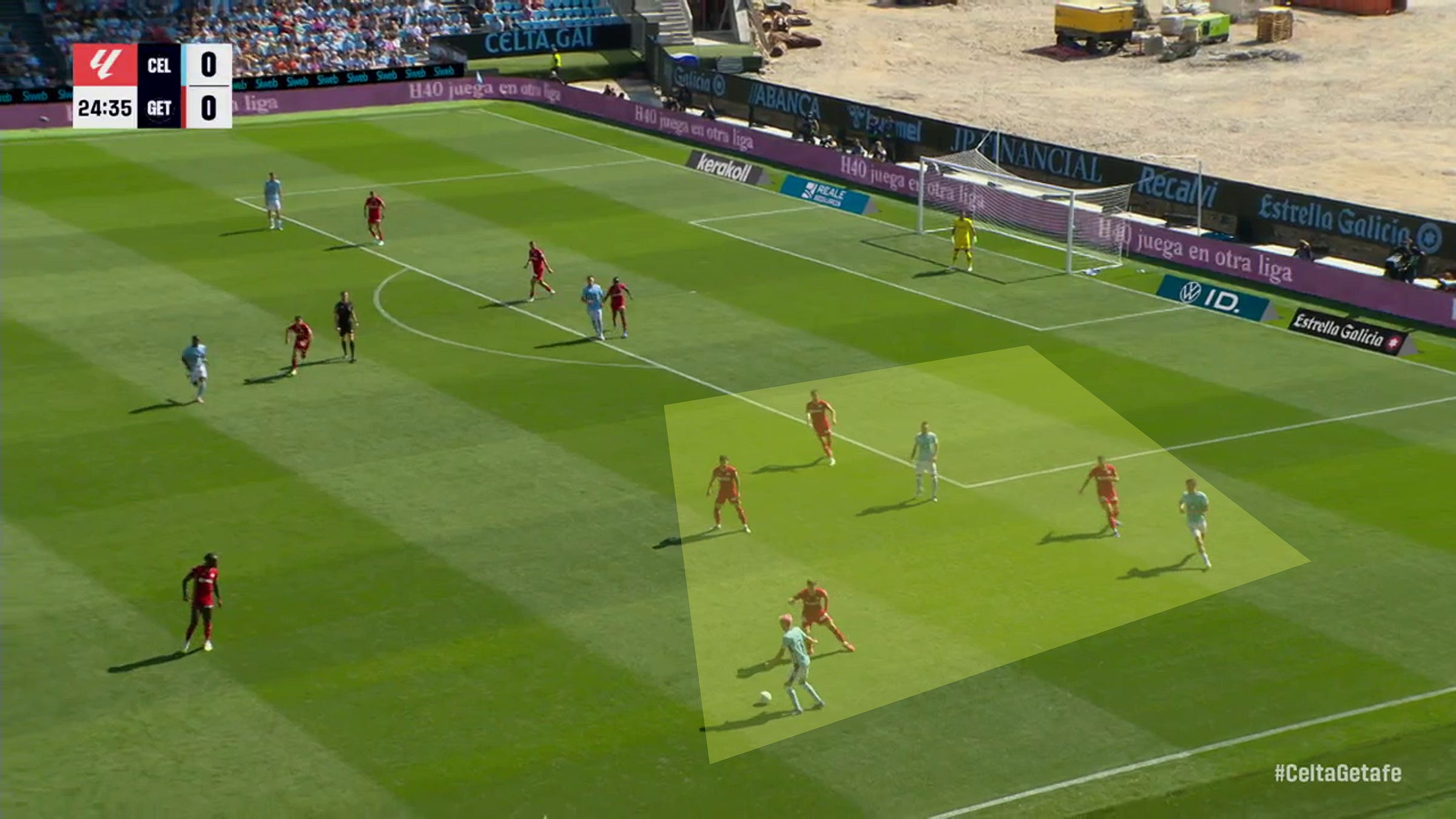
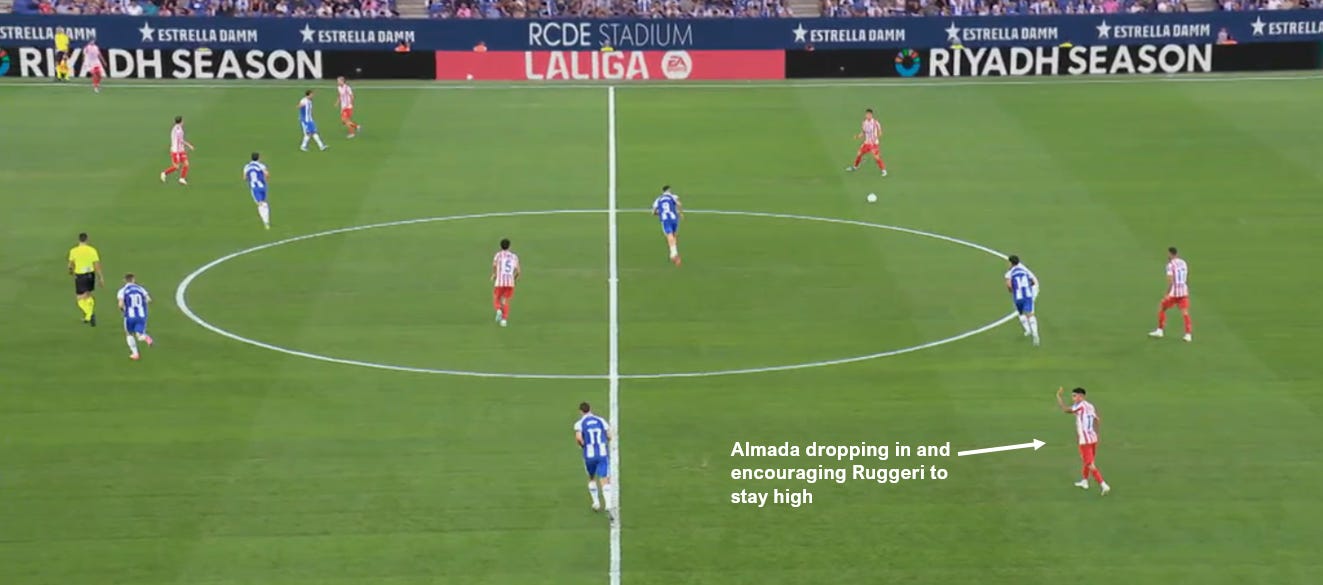
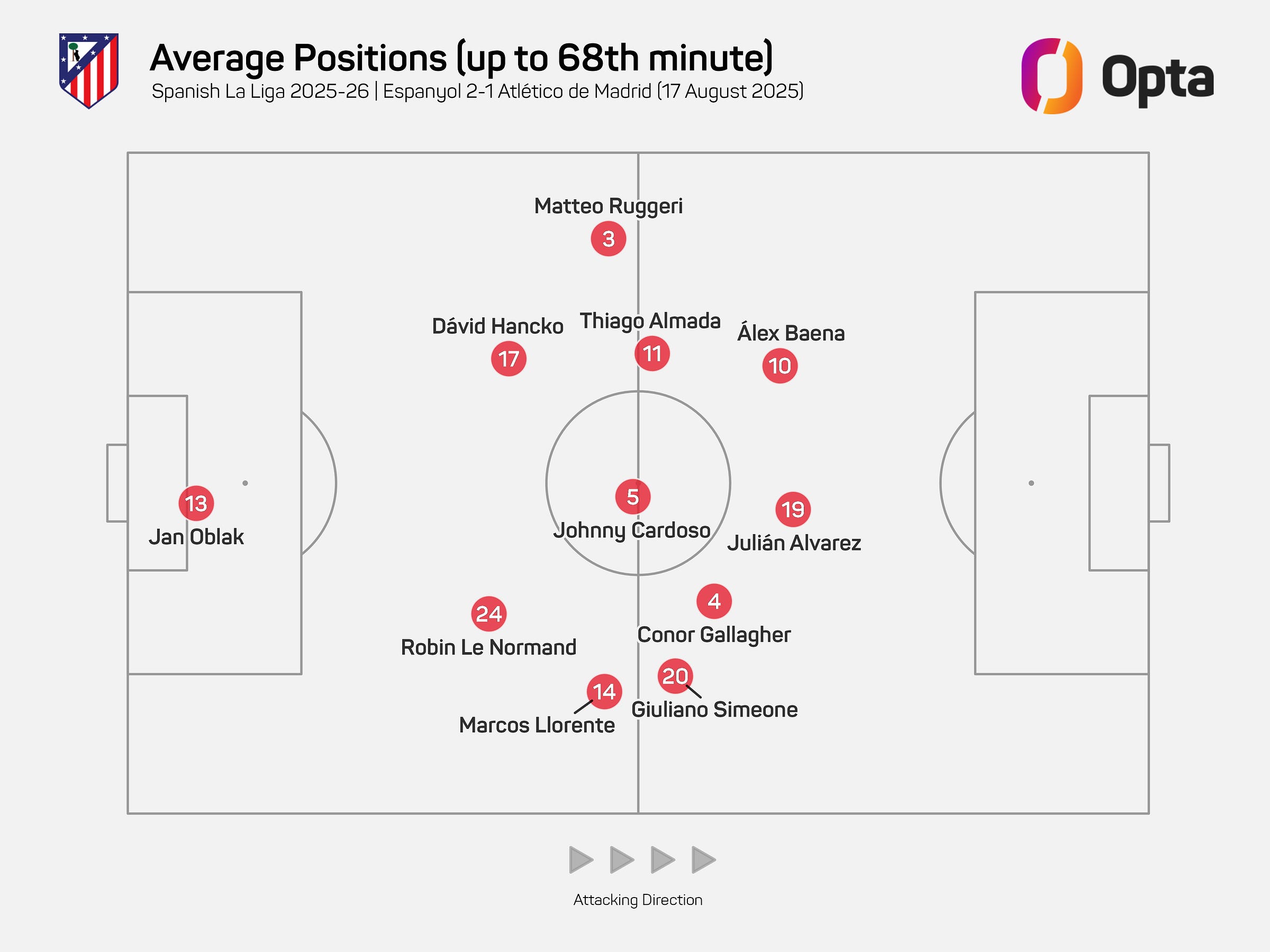
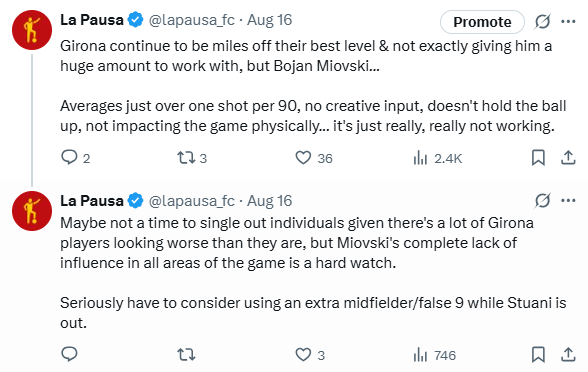
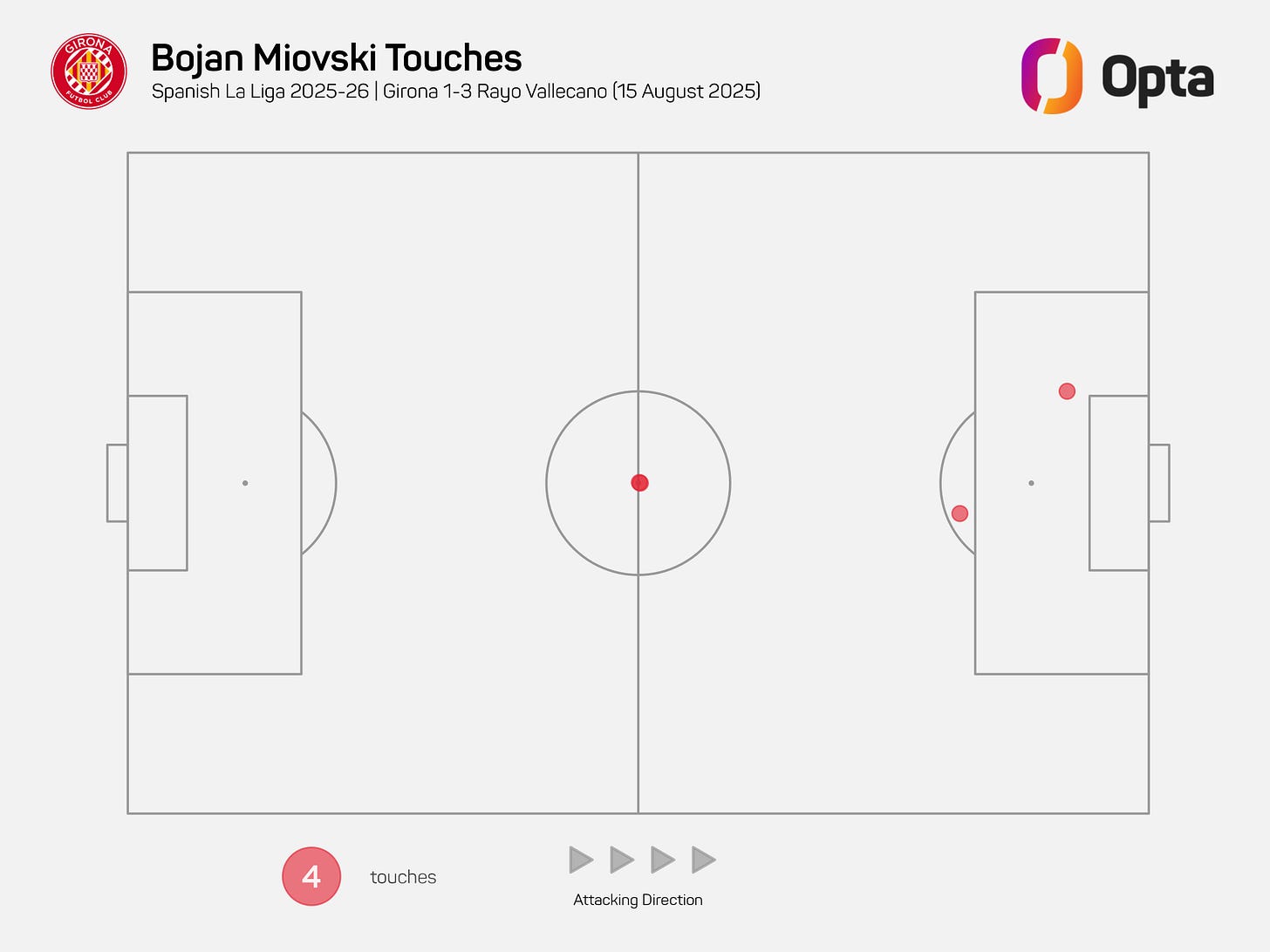
Thank you for writing this series! I watch Atleti's matches and have little time to follow rest of La Liga, so it's great to have a packaged assortment of the action going on with other clubs. Keep up, you have at least one grateful follower! Aupa Atleti!